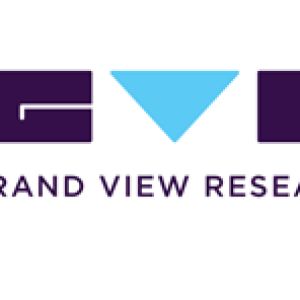Skeletal Dysplasia Market To Hit Value .6 Billion By 2026Posted by Mrudula Anil Karmarkar on May 16th, 2022 The global skeletal dysplasia market size is expected to reach USD 3.6 billion by 2026, according to a new report by Grand View Research, Inc., registering a 4.0% CAGR over the forecast period. Increasing prevalence of this condition, especially in children, and growing adoption of orphan drugs are likely to contribute to the expansion of the market. Among different disorders, achondroplasia is the most common condition. According to estimates published by the National Human Genome Research Institute in 2016, achondroplasia occurs in 1 in 15,000-40,000 live births. Although there are no current therapies approved specifically for achondroplasia, there are five therapies under clinical development. Genetic defects attributable to the disorder include spontaneous mutations in the FGFR3 gene. Vosoritide by BioMarin targets inhibition of the FGFR3 pathway and presents a first-in-class drug for achondroplasia. The drug is in phase III clinical trial and is expected to enter the market in 2024. Clementia (Ipsen Group) and Regeneron are other market players targeting disorders such as multiple osteochondromas and fibrodysplasia ossificans progressiva (FOP). Approval of these pipeline therapies with orphan drug status during the forecast period will further support skeletal dysplasia market growth. The medicines vary depending on the genetic cause of the disorder and only a handful of the disorders, such as XLH and hypophosphatasia, have approved curative therapies, including Ultragenyx Pharmaceuticals’ Crysvita and Alexion Pharmaceuticals’ Strensiq, respectively. Crysvita received FDA approval in 2018 whereas Strensiq received approval in 2015. The sales of Strensiq increased from USD 12.0 million in 2015 to USD 475.1 million in 2018. Higher uptake of these orphan drugs signal growth of the market. Commercialization of novel drugs and the presence of pipeline products are major factors projected to fuel market growth. For instance, Amgen Inc. is developing Denosumab, a phase III clinical trial product for the treatment of Osteogenesis Imperfecta (OI). Also known as brittle bone disease, OI is a type of skeletal dysplasia causing extremely short limbs. Similarly, Merck KGaA is developing recombinant human growth hormone (r-hGH) for hypochondroplasia and is currently in phase II clinical trials. In addition, BioMarin is developing BMN 111, which is currently under phase III clinical trials for the treatment of achondroplasia in children. Achondroplasia is a type of skeletal dysplasia that prevents the change of cartilage to bone. To Request Sample Copy of this report, click the link: https://www.grandviewresearch.com/industry-analysis/skeletal-dysplasia-market/request/rs1 Rising awareness of skeletal dysplasia is also anticipated to propel market growth. The Fetal Medicine Foundation and SKELDYS.ORG are some of the online portals providing information on the diagnosis and available treatment options for various types of skeletal dysplasias. In addition, emerging drug therapies for the treatment of this disorder is expected to contribute to market growth over the forecast period. Gene therapy involving allele silencing and cell-based therapy with mesenchymal cell and bone marrow transplantation is one of the promising therapeutic options for its research. Further key findings from the report suggest:
Some of the key players in the market are BioMarin; Amgen Inc.; Merck KGaA; Regeneron; Alexion Pharmaceuticals, Inc.; and Clementia (Ipsen Group). New product development, technological advancements, and mergers and acquisitions are some of the strategies adopted by these players to gain a larger market share. Approval of pipeline products with orphan drug status during the forecast period will further support market growth. In 2015, Alexion Pharmaceuticals received market approval for STRENSIQ (ASFOTASE ALFA) for the treatment of juvenile-onset hypophosphatasia (HPP). It is the first product approved for the treatment of HPP in the U.S. Grand View Research has segmented the global skeletal dysplasia market based on type, treatment: Skeletal Dysplasia Type Outlook (Revenue, USD Million, 2015 - 2026)
Skeletal Dysplasia Treatment Outlook (Revenue, USD Million, 2015 - 2026)
Like it? Share it!More by this author |


